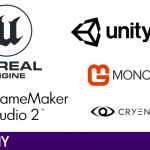Emerging technologies like artificial intelligence (AI) and virtual reality (VR) are ready to take education to the next level. From smart virtual tutors to immersive digital field trips, both carry huge potential to help students learn better. However, schools, companies and governments must work closely with communities to make sure these powerful learning tools get used fairly, safely and responsibly.
COntents: The Promising Future of Education Powered by AI and VR

AI Will Make Personalized Lessons for Every Student
AI promises to upgrade education in big ways by understanding each student’s strengths and weaknesses. Then it can create lessons tailored to their exact needs to help them progress.
Here are some key benefits AI-powered learning tools can offer students:
Continuous Assessment and Adaptive Instructions
“AI is like having a tutor that knows my abilities better than I do and helps me improve every day.”
AI tutoring systems track performance on practice problems or tests to diagnose gaps. A student struggling with algebra concepts will get more support before moving to advanced math. Someone breezing through grammar lessons will get nudged up to reading comprehension instead of wasting time.
The tutors “learn” too. If a student consistently makes the same kinds of mistakes, the tutor adjusts teaching methods automatically to reinforce where traditional instruction has failed. No two students’ journeys will look the same.
Instant Scoring and Feedback
Human teachers often lack bandwidth to grade every test and assignment. Students wait days or even weeks for scores and feedback. AI tutors though can evaluate work seconds after submission and highlight areas to improve. Getting real-time insight cements lessons much better than delayed comments or just a letter grade weeks later.
AI can grade not just multiple choice quizzes but even written essays close in quality to teachers. Software evaluates logic, reasoning and organization – not just grammar mechanics. Automating rote assessments lets teachers focus energy on higher value instruction.
Supplemental Multimedia Resources
Standard textbooks often lock learning into a single format not optimal for all cognitive styles. Some students absorb concepts better through:
- Visual models
- Interactive games
- Video explainers
- Audio content
- Real-world applications
Data-driven AI can compile or recommend compatible media resources from verified experts to reinforce class material. Contextual multimedia helps students deeply grasp abstract topics using multiple learning channels. Augmenting where lectures or worksheets alone fall short.

VR Enables Extremely Immersive Interactive Lessons
Virtual reality generates fully surrounding simulated environments using headsets and multiphase sensory technology. VR tricks the brain into feeling transported elsewhere, unlike anything possible with books or screens.
This immersion enables incredible new avenues for discovery-focused, experiential learning across nearly every discipline:
“Virtual Field Trips” Anywhere in Space and Time
Reading about coral reef ecology only teaches so much. But feeling ocean waves while swimming near dolphins and tropical fish? That emotional experience sticks with students forever.
Virtual travel collapses geographic barriers while remaining COVID-safe. Schools can easily provision field trips to Mars, Antarctic research stations, or Smithsonian museums for all students regardless of budgets. Visiting realistic simulations of otherwise inaccessible locations brings dry textbook concepts vibrantly to life.
Even the past becomes accessible through VR. Major historical events like protests or elections can get analyzed firsthand by time-traveling back as an avatar observer.
True-to-Life Career Skills Training
We learn best by doing. Yet real-world practice with complex machinery, patients or architecture plans has prohibitive cost or safety barriers.
VR bridges this gap wonderfully – medical, design, engineering students get low-risk yet extremely realistic environments to acquire career-ready skillsets. For example:
- Student doctors perform simulated surgery getting real-time expert mentorship before treating actual patients.
- Construction managers operate virtual cranes, bulldozers and other heavy equipment in a risk-free setting.
- Software engineers visualize code in interactive 3D workspaces improving speed and quality.
Experiential simulations prepare work-ready graduates minimizing early career stage learning curves. Significantly de-risking the steep curve of complex technical roles.

Key Benefits of AI and VR Education Tools
| Area | Benefits |
|---|---|
| Personalized Learning | Adaptive teaching tailored to each student’s strengths, pacing and interests |
| Accessibility | Breaks geography & budget barriers so all students benefit from best instructor talent |
| Engagement | Immersive media and gaming elements spark curiosity/motivation |
| Career Readiness | Real-world simulations build hard skills safely |
| Assessment | Instant scoring and feedback helps students improve faster |
These technologies unlock types of effective, enjoyable learning simply not possible at scale before.
However, to earn public trust, the education technology industry must lead development and adoption responsibly. AI and VR carry risks if deployed poorly – from biased algorithms to mental health issues. Working closely with schools and communities will illuminate the best guardrails.
Next let’s explore key questions leaders must address to integrate AI and VR smoothly, fairly and safely.
Critical Considerations Around Fairness, Transparency and Student Wellbeing
Even revolutionary innovations like electricity, automobiles and the Internet carried unforeseen externalities. Leaders today have an obligation to proactively investigate downsides in order to minimize harm. Especially when emerging technologies impact children’s growth.
Below are crucial areas technologists, policymakers and schools should explore openly with parents early on:
Preventing Algorithmic Bias and Promoting Fairness
Like any technology, artificial intelligence carries risk of perpetuating and amplifying existing societal biases. For example:
- Tutoring algorithms trained only on gifted students in elite schools may unfairly assume disadvantaged youth have less potential.
- Essay grading engines could score native English speakers higher simply due to imbalanced data versus actual writing capability.
- Chatbot mentors reflecting only western cultural norms might alienate non-western students.
Such skewed assessments could become digitalized barriers to opportunity and inclusion.
To promote fairness, companies deploying AI must:
- Extensively audit algorithms across diverse student subgroups to catch differential outcomes before product release
- Continuously monitor performance as real usage expands to surface issues
- Improve model transparency so reasons behind scoring become explainable
- Expand training data diversity via techniques like augmentation to better represent minorities
School administrators also have a key role validating efficacy across varying enrollments even after deployment.
Ongoing collaborative vigilance, not just one-time checks, will be critical to prevent embedded unfairness as AI integrates more deeply.
Maximizing Student Privacy While Enabling Personalization
In order to customize learning, AI platforms require extensive data profiling students:
- Knowledge and skill levels
- Engagement patterns
- Motivational triggers
- Pace of learning
- Emotional responses
This student data holds immense potential societal value but also risks exploitation if not stewarded appropriately. For example:
- Advertisers could leverage it for manipulative youth marketing
- Third parties lack incentive to not monetize it
- Leaks may expose children identity theft or bullying
To earn trust as data guardians, education technology vendors must implement state-of-the-art safeguards exceeding legal minimums. Namely strict access controls, encryption protocols, external audits and transparent policies. Schools too play key oversight roles stewarding pupil information.
With carefully architected privacy and governance, responsibly harnessing student learning data promises more academic progress than peril.
Setting Healthy Boundaries On Usage
While VR enables memorable visceral experiences impossible otherwise, improperly managed immersion carries risks resembling other digital media addictiveness:
- Long sessions in headsets can negatively impact child eye development and posture
- Highly stimulating content risks overexciting developing brains without self-regulation
- Prioritizing VR worlds may displace vital in-person social connections
To promote healthy usage habits, education leaders should:
- Institute reasonable maximum daily time limits on VR activities
- Match simulation maturity levels tightly to appropriate ages
- Train teachers vigilantly monitoring for addiction warning signs
With thoughtful discipline and adult guidance, students can safely harness VR’s learning advantages while avoiding troublesome overuse or isolation.
Pros and Cons of Implementing AI & VR in Education
| Pros | Cons |
|---|---|
| Adaptive personalized learning at scale | Risk of perpetuating societal biases if not designed inclusively |
| Immersive experiential simulations not possible otherwise | Overuse could negatively impact child development without oversight |
| Breaks geographic/financial barriers to high-quality education | Student privacy around captured personal data requires state-of-the-art safeguarding |
| Boosts engagement through multimedia/gaming techniques | Teachers may face job displacement needing retraining support |
Thought leaders shaping the future of learning should weigh both advantages and risks openly. But with care, responsibility and community collaboration – the positives can outweigh the negatives by large margins.

Key Steps Schools Can Take When Evaluating AI & VR Solutions
Educators play pivotal roles vetting innovations against student welfare standards locally. When reviewing potential AI or VR tools, school leadership should:
Rigorously Assess Impact on Overall Wellbeing
- Set limits on daily headset exposure time for younger ages
- Probe vendor safeguards & policies around privacy, bias and toxic content risks
- Survey students regularly on comfort levels and adoption pacing
👆 Monitor closely that technology integrates as an empowering academic tool without unhealthy overuse or external pressure.
Validate Effectiveness for District Learner Populations
- Pilot innovations extensively before broad rollout
- Compare efficacy metrics across learner subgroups to detect uneven impacts suggesting potential bias
- Continue monitoring student outcomes post-implementation to catch issues
👆 Ensure quality, relevance and fairness at localized community levels – not just company lab tests.
Have Teachers Lead Oversight Governance
- Create administrator+teacher councils to set integration policies and troubleshoot
- Train educators on recognizing problematic symptoms needing intervention
- Empower teachers to disable features if students show signs of unhealthy usage patterns
👆 Those closest to students must guide appropriate adoption pacing and usage norms.
With collaborative foresight and responsibility, schools can harness AI and VR as springboards uplifting students rather than risks diminishing human connections fundamental to positive development.

Key Takeaway: Progress Responsibly with Community Partnership
🧑🏫 If designed and governed carefully – with transparency, accountability and concern for young wellbeing – AI tutors and VR lessons could accelerate learning dramatically compared to traditional formats restricted by resource barriers and one-size-fits-all compromises.
But the tech industry cannot drive this alone without input from students, parents, educators and communities.
Intimate cooperation, not isolated competition, will illuminate the best path forward. Joint pilot programs, open data standards, responsive governance policies and candid dialog around concerns can proactively address ethical hazards.
And redirected profit seeking energy into inclusive innovation lifting up historically disadvantaged youth first could set inspiring example of compassionate capitalism.
The future of AI and VR education looks extremely promising. But we must build it responsibly together.
🧑🏫 Leaders today have an obligation to promote both academic and social-emotional progress. If stewarded well jointly, emerging technologies could help all students reach their full human potential with care and empowerment.
For more interesting articles about AI and VR don´t forget to check frequently on our blog.


![Buildbox Free - How To Make 2D Platformer Game [PART 1]](https://e928cfdc7rs.exactdn.com/info/uploads/sites/3/2020/01/Buildbox-Free-How-To-Make-2D-Platformer-Game-PART-150x150.jpg?strip=all&lossy=1&ssl=1)

